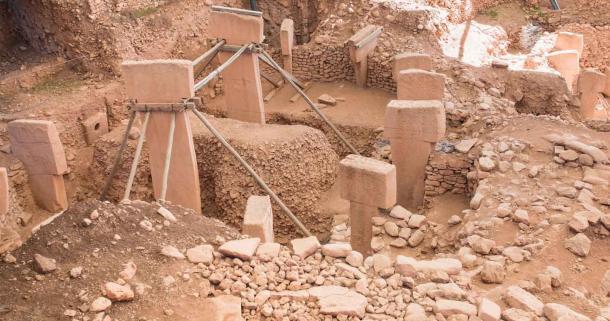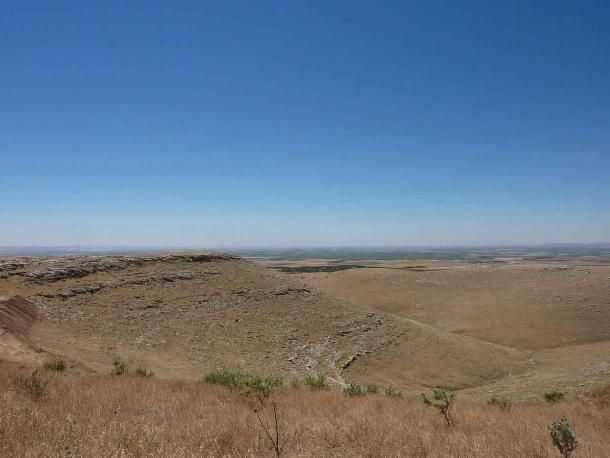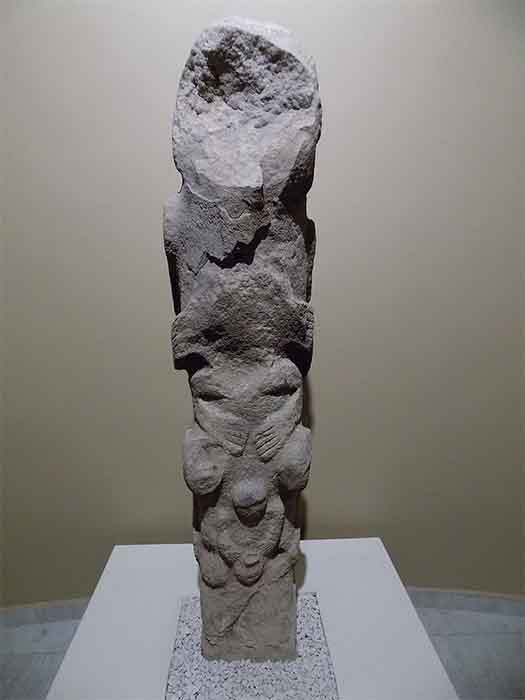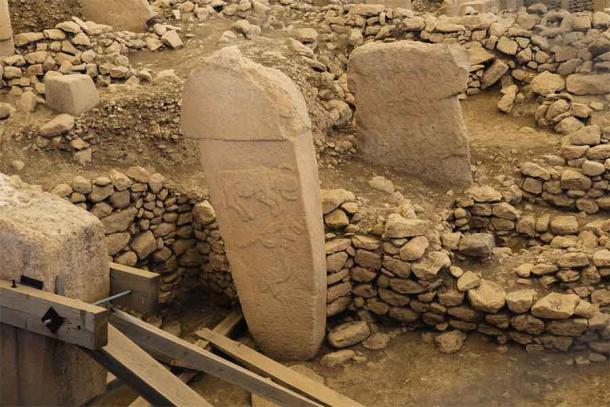The Turkish government has just announced a major archaeological discovery that could have a serious impact on the study of Neolithic Era culture in the region. On June 27, Turkey’s Culture and Tourism Minister Mehmet Ersoy told reporters gathered in the southeastern Turkish city of Sanliurfa that several new sites had been found in the vicinity of Göbeklitepe, the world’s oldest prehistoric stone monument site. Also written as Gobekli Tepe, the site name translates into “belly hill” in Turkish.
“We have [discovered] 11 more major hills on a 100-kilometer line around Göbeklitepe,” Ersoy declared. “Here, we will give the details for the first time, and now call it 12 hills.”
In fact, Ersoy offered few details about what had been found at these new sites. He explained that a “major study” was on the verge of being completed and said the results of that study would be released in September 2021.
Engaging in what may or may not have been hyperbole, Ersoy said that people may soon be describing the monuments found in the Sanliurfa region as “the pyramids of southeast Turkey.”
If these new sites are on a par with the spectacular remains uncovered at Göbeklitepe, their discovery would represent a significant milestone in prehistoric archaeology in the Mesopotamian region.

An example of one of the many circular stone monolith formations unearthed at Göbeklitepe, Turkey. ( muratart / Adobe Stock)
The Meaning of Göbeklitepe: What We Know So Far . . .
First unearthed in 1995 by German archaeologist Klaus Schmidt, the Neolithic excavation site at Göbeklitepe has produced the most stunning and impressive collection of standing stone pillar monoliths ever found on Earth.
The biggest monoliths at Göbeklitepe are as tall as 20 feet (six meters) and are estimated to weigh between seven and ten tons (7.7-11 US tons). They were arranged in large circles, with a pair of heavy T-shaped pillars placed in the center of each arrangement. Some were decorated with carved images of animals, and others with obscure shapes and images that have no clear real-world references.
Neolithic hunter-gatherers working in teams built and inscribed these stone circles, over a period of perhaps 1,000 years. The oldest construction work at Göbeklitepe has been dated to about 9,000 BC, meaning that some of the monoliths found there were carved and erected 6,000 years before the rock pillars at Stonehenge.
It is important to realize this feat was accomplished by individuals who had no access to metal tools or wheeled transport carts. They used stone / flint hand tools to carve out and shape huge slabs of limestone from nearby quarries. The massive pillars would then be levered out of their places in the quarry rock walls, and somehow hauled, dragged, or lifted to the Göbeklitepe construction site.
In some instances, the builders placed the circles alongside each other. In other instances, they put them one on top of the other, after the circle on the bottom had been buried. Sometime after construction stopped the entire complex was buried, creating a low-topped artificial mound or hill that was 50 feet (15 meters) high and 1,000 feet (300 meters) in diameter.

The seemingly forgotten landscape around the Göbeklitepe site and likely where the latest 11 hills or artificial mounds have recently been discovered. So far photographs of the newest discovery area have not been released. (Zhengan / CC BY-SA 4.0 )
Culture and Tourism Minister Mehmet Ersoy’s statement about the “12 hills” implies that new monolithic sites have been found buried beneath similar artificial mounds. If stone pillar circles have been unearthed at these locations, it remains to be seen if they were built to the same specifications and in the same style as the circles at Göbeklitepe, or if they are as old (or even older).
Archaeologists have already found other sites in the region where stone pillars have been carved out of quarries and arranged in standing circles. None of the other sites are as ancient as Göbeklitepe, however, which was apparently in use 11,000 years ago. They do all feature the distinctive T-shaped central pillars found at Göbeklitepe, a type of monolith that has only been discovered in ancient sites built close to the city and province of Sanliurfa.
This suggests they all were created by the same stone-monument-building culture, which presumably would also be responsible for making whatever has been found during excavations at the 11 newly discovered hills.

A Neolithic totem pole from Göbeklitepe from Layer II, dated to 8800-8000 BC. (Cobija / CC BY-SA 4.0 )
Uncovering the Many Remaining Secrets of Göbeklitepe
Unsurprisingly, Ersoy’s primary interest in the new discoveries is how they might affect tourism in the region.
“When you look at Mesopotamia, this region has a unique culture,” the Minister said at his press announcement. “It has its own registered gastronomy. It has many products. And when you combine that with its unique archaeological value, it’s a wonderful thing.”
The Turkish government’s priorities are understandable. But the interests of the archaeological community are quite different.
With respect to the incredible monuments at Göbeklitepe, perhaps the biggest question left unanswered is, why were they built?
The general consensus is that Göbeklitepe was a religious or spiritual mecca, sought out by ancient worshippers looking to commune with their gods or with the spirits of their ancestors. The site has often been referred to as the world’s oldest temple. Schmidt, the site’s original discoverer, believed that one day graves would be found beneath the monolithic circles, proving they were built as monuments to the dead.

This monolithic pillar at Göbeklitepe is decorated with pictograms of animals. Surprisingly, the meaning of these pictograms is still a mystery that archaeologists and anthropologists are hoping to solve. ( mknisanci / Adobe Stock)
Pictograms were carved into many of the pillars. But unfortunately, scholars have been unable to interpret them, as either pictures or as symbols. Many of the pillars are decorated with images of animals, of dozens of different species including gazelles, lions, bears, foxes, bulls, snakes, birds, spiders, and a variety of insects. While arid now, during the Neolithic era Turkey was part of the Fertile Crescent , a region blessed with abundant rainfall, fertile soil, dense grasslands, and wildlife of all types.
The imagery on the pillars may relate to worshipping practices or religious rituals in some way. The same can be said about the shapes of the stone circles, which may have been arranged to reflect astronomical alignments . But since Göbeklitepe was constructed by prehistorical peoples, there is no written record to guide archaeologists and historians in a useful direction, as they attempt to comprehend what they’ve found.
Assuming they were built by the same ancient people, the remains at the newly discovered sites will likely be similar to those found at Göbeklitepe. If so, their ultimate purpose may be just as mysterious.
But if the stone pillars in these new locations contain different imagery than those at Göbeklitepe, or if they feature clearer pictograms that can be successfully interpreted, their discovery may be a game-changer. Having more remains to examine may increase understanding about the motivations of the builders. It could reveal whether they were inspired by religious sentiments, or by some other type of ancient or universal motivation.
Top image: Göbeklitepe is so important that it has been completely covered to protect it from rain. To date, it is the oldest place of worship ever found on Earth, dating to 12000 BC. Archaeologists are expecting more amazing finds and insights from the recently discovered 11 new hills (or artificial mounds) near the site for which details will be released in September 2021. Source: Cihangir Zeybek / Adobe Stock
By Nathan Falde
 RSS Feed
RSS Feed















 June 30th, 2021
June 30th, 2021  Awake Goy
Awake Goy  Posted in
Posted in  Tags:
Tags: 













